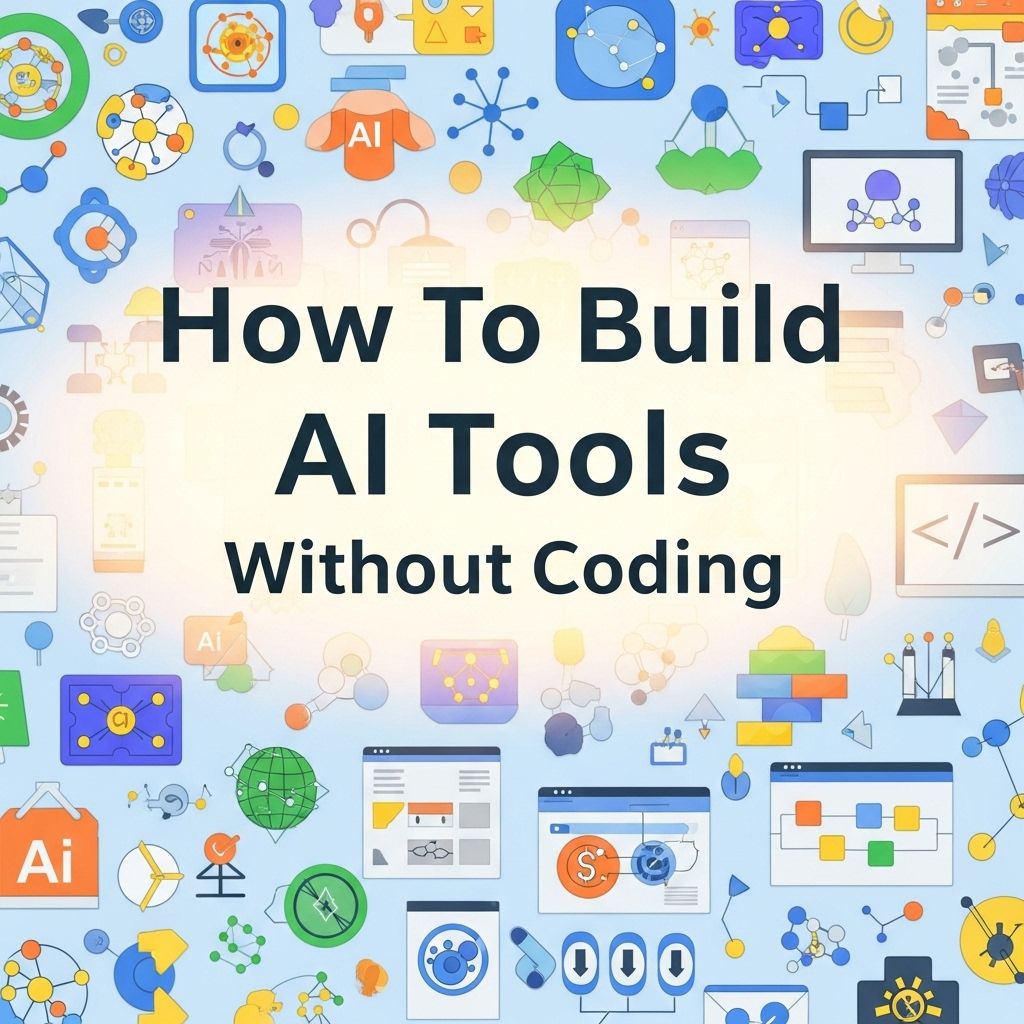In the rapidly evolving landscape of technology, artificial intelligence (AI) has emerged as a powerful tool that can enhance productivity, automate tasks, and enable smarter decision-making. While many believe that creating AI tools requires extensive coding knowledge, there is a growing array of user-friendly platforms that allow individuals to develop AI solutions without writing a single line of code. This article explores various no-code AI tools, their applications, and how anyone can leverage them to drive innovation.
Table of Contents
Understanding AI and No-Code Platforms
Artificial intelligence refers to the simulation of human intelligence processes by machines, particularly computer systems. These processes include learning, reasoning, problem-solving, and understanding language. No-code platforms allow users to create applications, including those that utilize AI, through graphical user interfaces instead of traditional programming.
The Rise of No-Code Development
The no-code movement has gained momentum due to several factors:
- Accessibility: No-code tools are designed for non-technical users, enabling them to create applications without programming skills.
- Speed: Development time is significantly reduced, allowing for rapid prototyping and deployment of AI solutions.
- Cost-Effectiveness: By eliminating the need for hiring developers, businesses can save on costs while empowering their staff to create tools that meet their specific needs.
Popular No-Code AI Tools
There are many no-code platforms that cater to different needs, from data analysis to chatbot creation. Here’s a look at some of the most popular tools:
| Tool | Purpose | Key Features |
|---|---|---|
| Google AutoML | Machine Learning | Custom model training, image and text classification |
| Zapier | Workflow Automation | Connects apps, automate tasks, trigger actions |
| Chatbot.com | Chatbot Development | Drag-and-drop interface, pre-built templates |
| Microsoft Power Automate | Process Automation | Integrates with Microsoft products, data handling |
| Tableau | Data Visualization | Create dashboards, analyze data with AI insights |
Google AutoML
Google AutoML is a suite of machine learning products that enables developers to train high-quality models specific to their needs. Users can upload their datasets, and AutoML handles the fine-tuning of model parameters.
Zapier
Zapier is a workflow automation tool that connects different applications and automates repetitive tasks. Users can set up “Zaps” that trigger actions across multiple platforms, utilizing AI to streamline processes.
Chatbot.com
Chatbot.com allows users to create intelligent chatbots without coding. Its drag-and-drop interface makes it easy to build conversational flows, and users can deploy these bots on websites, social media, or messaging apps.
Steps to Build AI Tools Without Coding
Building AI tools without coding can be broken down into a series of manageable steps:
- Identify the Problem: Start by defining a specific problem that you want to solve using AI.
- Choose the Right Tool: Select a no-code platform that aligns with your objectives.
- Gather Data: Collect data that will be used to train or inform your AI model. This could be customer feedback, sales data, or any relevant information.
- Develop the AI Solution: Use the platform’s features to build the AI tool, customizing it to fit your needs.
- Test and Iterate: After deployment, test the tool in real scenarios, gather feedback, and make necessary adjustments.
Case Studies of No-Code AI Implementations
Several organizations have successfully leveraged no-code AI tools to achieve remarkable results. Here are a few notable case studies:
1. Customer Support Automation at XYZ Corporation
XYZ Corporation implemented Chatbot.com to create a customer support chatbot. This resulted in a 30% reduction in support ticket volume and improved customer satisfaction due to quicker response times.
2. Sales Process Optimization for ABC Company
ABC Company utilized Zapier to automate their lead nurturing process. By integrating their CRM with email marketing tools, they were able to increase their lead conversion rate by 25% in just three months.
3. Data-Driven Insights for DEF Nonprofit
DEF Nonprofit adopted Tableau to visualize their donor data. The insights gained allowed them to better target their fundraising efforts, leading to a 40% increase in donations over the previous year.
Challenges and Considerations
While no-code AI tools offer numerous advantages, there are some challenges and considerations to keep in mind:
- Data Quality: The effectiveness of AI tools is heavily reliant on the quality of the data used. Ensure your data is clean, relevant, and well-organized.
- Limited Customization: No-code platforms may not offer the same level of customization as traditional coding, which might limit advanced use cases.
- Scalability: As your needs grow, you may outgrow the capabilities of certain no-code tools, necessitating a transition to more robust solutions.
Conclusion
No-code AI tools empower individuals and organizations to harness the power of artificial intelligence without needing extensive technical skills. By understanding the available resources and following a structured approach to tool creation, anyone can contribute to innovative AI solutions that enhance efficiency, creativity, and problem-solving. As no-code platforms continue to evolve, the possibilities for application are virtually endless, making AI more accessible than ever before.
FAQ
What are AI tools that can be built without coding?
AI tools such as chatbots, automated data analyzers, and content generators can be created using no-code platforms.
What are some popular no-code platforms for building AI tools?
Popular no-code platforms include Bubble, Zapier, Adalo, and Microsoft Power Apps, which provide user-friendly interfaces for AI tool development.
Can I create a chatbot without coding?
Yes, platforms like Chatfuel, ManyChat, and Tars allow you to build chatbots using drag-and-drop features.
Is it possible to integrate AI into existing applications without coding?
Yes, services like Google Cloud AutoML and IBM Watson provide APIs that can be integrated into applications through simple configurations.
What skills do I need to build AI tools without coding?
Basic computer skills, an understanding of AI concepts, and familiarity with no-code platforms are beneficial for building AI tools without coding.
Are there any resources to learn how to build AI tools without coding?
Yes, many online courses, tutorials, and community forums offer guidance on using no-code tools to create AI applications.









